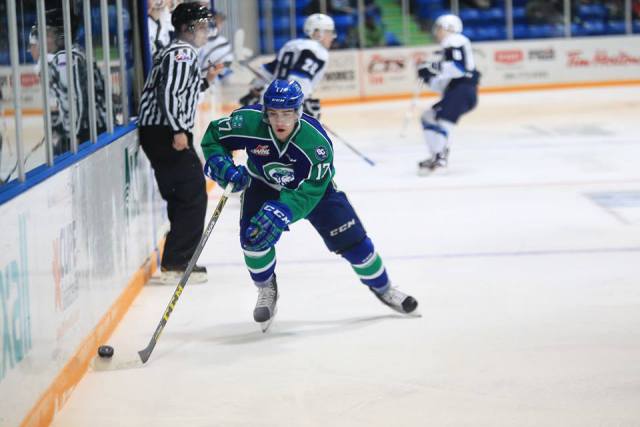 152. LHD Riley Stillman (Oshawa, OHL):
152. LHD Riley Stillman (Oshawa, OHL): Physical puck distributor with a heavy shot who was one of Oshawa’s leaders after its roster was hit hard by graduations. The son of NHL veteran Cory Stillman, Riley is quick and athletic with a developing sense for how to jumpstart an offense. It took 20 games for him to register his first point of the season, only to turn it on with an impressive 21 over his final 42 matches. Stillman along the wall is a tough matchup for forwards regardless of their size (he’s listed at 6’0, 180 pounds), but he could stand to work on his slot positioning as he’s often guilty of chasing and vacating. We’d also like to see him commit to a puck possessor with confidence and authority rather than look indecisive, a weakness the pro’s will sniff out in a hurry. Stillman has very good catch-up speed and can win footraces to the puck, and has above-average first-step quickness which helps him get into scoring position near the net..
 153. RHD Zach Osburn (Michigan State, Big-10):
153. RHD Zach Osburn (Michigan State, Big-10): One of the nation’s top freshman power play specialists whose five goals with the man-advantage was tops among all first-year defenders. The hard-shooting Michigan native is an excellent skater who loves to attack and exploit gaps in opposing coverage. He’s a tad on the smaller size (5’11, 185), and having a size disadvantage against bigger NCAA forwards was evident from the start of the season. It was a rebuilding year in East Lansing, but it was Osburn who created legitimate buzz with his right-handed cannon and proclivity for firing pucks on net. He doesn’t hide his desire for dropping down below the hash marks, and when you can skate as well as he can, the reward outweighs the risk.
 154. C/W Tyler Steenbergen (Swift Current, WHL):
154. C/W Tyler Steenbergen (Swift Current, WHL): Former top Bantam pick (12th overall in 2013) with leadership traits and a multi-tool offensive player. Steenbergen rebounded from a slow start to torch the WHL, but the effort was always there. His speed and hard wrist shot are his noticeable assets, but reports indicate he is full of intangibles. Steenbergen is a patient and accurate passer, but he’ll stay in motion after the pass rather than just stand there and wait for the play to come back to him. He isn’t big (5’11, 170) but will throw the body on occasion, as well as take punishment in order to complete a play. He may not top out as a consistent go-to guy, but on occasion will carry the offensive load. Has the potential to become one of the WHL’s top under-19 scorers next season..
 155. G Jake Kielly (Tri-City, USHL):
155. G Jake Kielly (Tri-City, USHL): It’s a shame one of the best amateur goalies in any league is barely on the pre-draft rankings radar, and we’ll own up to the fact that we slept on this double-overage Clarkson-bound netminder, who capped off an amazing first year in the USHL with a well-deserved Clark Cup championship. Kielly missed 2015 draft eligibility by only five days after a solid season with the NAHL’s Austin Bruins, which he followed up by finishing sixth in the USHL in both goals against (2.33) and save percentage (.919). He was a brick wall in the playoffs, posting four shutouts in just 11 games. Kielly is an athletic, well-positioned goalie blessed with NHL size (6’3, 205) and a seriousness towards his craft in the mold of a young Henrik Lundqvist.
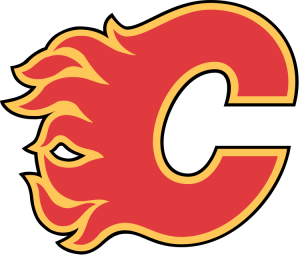 156. C/W Matt Fonteyne (Everett, WHL):
156. C/W Matt Fonteyne (Everett, WHL): Pesky speedster with an excellent shot and quick hands who was leaned quite often on to help Everett’s goal-starved offense. He teamed with fellow 2016 draft eligible Patrick Bajkov to form a respectable 1-2 punch, albeit one lean in the experience department. Still, he was used in all situations and proved to be a special teams threat. Fonteyne can score off the rush, using his speed to beat defenders to the outside then make a quick directional change right for the cage. Once he gets there, he has an arsenal of moves to tickle the twine, specifically a pro backhander that he can elevate from in tight. He’s not intimidating from a physical standpoint (5’10/185), but he plays fearless and will find a way to get under an opponent’s skin. Even more impressive is that Fonteyne will dig into the low slot area regardless of how big the defender standing behind him is.
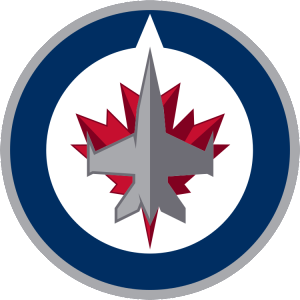 157. G Jack Lafontaine ( Janesville, NAHL)
157. G Jack Lafontaine ( Janesville, NAHL): Mature and personable big-bodied goalie fromt he NAHL who will don the blue and gold of Michigan in the fall. Lafontaine is an active goalie who reads plays well, especially cross-ice passes. He’s quite athletic for a big kid (6’3, 200 pounds) and plays an aggressive style. The fact that he has an active stick and exceptional puck-handling abilities almost makes a third defenseman, but his timing on dump-ins is somewhat inconsistent. Still, his posititioning is solid, and his reset ability coupled with a quick glove make him hard to beat when he allows rebound attempts. Lafontaine has a great attitude towards both his craft and the game of hockey, and will likely develop faster than most of his peers.
 158. LHD Griffin Luce (U.S. U18, NTDP):
158. LHD Griffin Luce (U.S. U18, NTDP): A steady positional defender who seems comfortable in most one-on-one situations and refuses to let speed intimidate him. The Michigan-bound Luce’s footwork and mobility is about average in comparison to his draft class peers, but he plays a pretty tight gap and uses his long reach to his advantage. Entering the zone against him is quite difficult, as he doesn’t concede much territorially and knows how to time his poke checks. Luce won’t put up many points, but then again, he’s never been given much of an opportunity to. Naturally, it goes both ways, as offensive zone starts and power play time are two things he hasn’t really earned outside of having a decent shot. Luce can over-handle the puck at times, and he’s at his best when he keeps things simple and acquiesces to his more competent puck-controlling ice mates. At 6’3, 220 pounds, Luce can be a hard-nosed, physical force on the ice, which served him well against older NCAA competition..
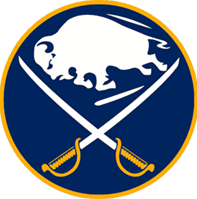 159. LW Linus Weissbach (Frolunda J20, Superelit):
159. LW Linus Weissbach (Frolunda J20, Superelit): Explosive winger with lethal hands and one of the draft’s quickest first steps. Weissbach is a candidate to cross the pond and join Tri-City in the USHL, which makes the prospect of drafting him all the more legitimate. He’s a crowd pleasure with the ability to create scoring chances via the pass or his skates in the blink of an eye. He’s only 5’9, but he is tenacious on the forecheck and will take a pounding along the wall without relinquishing possession. Weissbach has an assortment of ways to score, but he can be guilty of puck gazing in his own end — if he ever finds it. He missed the U18 worlds because of an upper-body injury.
 160. RHD Gabriel Sylvestre (Shawinigan, QMJHL):
160. RHD Gabriel Sylvestre (Shawinigan, QMJHL): Stay-at-home type who was paired with top prospect Samuel Girard for the majority of the season to form a good yin-and-yang pairing. Sylvestre is a meat-and-potatoes defender who does nothing flashy, but nothing consistent in terms of production. He is at solid bottom-pairing/depth option since he’s raw — good positionally but goes down often and commits to shooter quite early into situations like a 2-on-1. Sylvestre uses an active stick to break up passes on the penalty kill and makes a smart play on the breakout more times than not. He’s got a mean streak too, and he will always stand up for a teammate to give a guy the business if he’s lingering around the goal mouth or crease. Sylvestre is prone to take dumb and/or lazy penalties, and his skating is about average, but he owns a hard shot and can blow it past a goalie from a significant distance. He’s not much of a risk taker but on occasion he will drop down into the low slot and fish around for a rebound or centering pass. Overall, he has limited offensive potential, but has very real shut-down upside.
 161. G Antoine Samuel (Baie-Comeau, QMJHL):
161. G Antoine Samuel (Baie-Comeau, QMJHL): Tall, athletic butterfly-style goalie who had the misfortune of playing for a bad team which tilted the ice towards his crease for what must have seemed like an eternity. Samuel seems to do better, however, when he’s involved in the game and facing a ton of rubber. He’s got the prototypical build (6’2, 190 pounds) NHL teams looks for in a goalie, and he’s actually quite sound from a technical standpoint. Samuel’s biggest problem is an inability to maintain an even keel and not let a bad bounce or two get to him. He’s got the quickness and reset ability to limit the amount of net to shoot at, and he doesn’t get beat down low as often as others in his class. Any goalie will tell you how important the mental aspect of netminding is, so figuring out how to stay calm and composed for 60 minutes should be Samuel’s offseason priority.
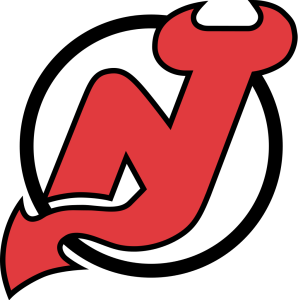 162. C Michael O’Leary (Dubuque, USHL):
162. C Michael O’Leary (Dubuque, USHL): All the tools are there — size, skill, speed and vision — as he proved with a strong playoff for the Fighting Saints. It’s just a matter of putting it all together into one complete, consistent package. O’Leary was one of Eastern Canada’s top prospects — the Halifax native was the 14th overall pick in the 2014 QMJHL draft — yet struggled to find his way as a USHL rookie (USHL Top Prospects Game domination notwithstanding). Still, he can be a two-way force, at times unstoppable, when he’s got his head into a given game. O’Leary can flat out fly, but he’s got the build (6’2, 200) to make the notion of facing him even scarier. He can adapt to most game situations, whether grind-it-out or up-and-down, but like most power forwards, he goes through periods of invisibility and can look like he cares less. It’s difficult not to label this kid a top prospect, but there’s far more to the game than skill, even if he seemingly can do it all. He was originally commuted to Cornell but rescinded that promise last month, thus making him an NCAA free agent or a flight risk to the CHL. Either or, O’Leary needs to mature and clean up his in-game antics and commit himself towards becoming the star we think he can become.
 163. C/W Jonathan Ang (Peterborough, OHL):
163. C/W Jonathan Ang (Peterborough, OHL): Creative speedster with the ability to fight through a dense network of opposing checkers. Ang is not only fast and skilled, but he has excellent on-ice awareness and overall hockey sense. His biggest issue is size, as he’s listed at 5’11 but with a meager playing weight of 165 pounds. He’s terrific in the open, which goes without saying. But Ang isn’t your typical amateur roadrunner who relies solely on quickness to achieve results. He’s dedicated towards making the right decisions that are in the team’s best interests rather than for personal gain, and you will see Ang — as fast as he is — dig in and lend support to his defensemen below the circles or along the boards. Whether or not he makes an impact isn’t the point — he’s a offensive dynamo he clearly understands there’s more to the game than scoring. Ang is slippery with the puck and uses his hands to finish off plays from in tight. If you play the puck, you’re begging for a crooked number on the scoreboard.
 164. LHD Sam Rossini (Waterloo, USHL):
164. LHD Sam Rossini (Waterloo, USHL): Future Golden Gopher who is a mean, physical defender with a booming shot and sound checking abilities. Rossini likely tops out as a bottom-pairing support type, but there’s no denying how good he is in a shutdown role. It was a bumpy second season for the native Minnesotan in terms of offense, as he was used sparingly on the power play and did not increase production from the previous season. He has quick feet for a 6’2, 200-pound teenager blueliner, and he’s extremely difficult to dance around since he always plays the man. Point production aside, Rossini has to cut down on the after-the-whistle penalties and learn how to keep his emotions in check.
 165. C/LW Marco Miranda (GCK, NLB):
165. C/LW Marco Miranda (GCK, NLB): Big-bodied finesse forward who is more of a finisher than a playmaker. In terms of skaters, Miranda is arguably the best the Swiss have to offer for the 2016 Draft as all of their draft-eligibles failed to distinguish themselves both individually and collectively over the course of a half-dozen international events. Miranda, however, was one of the few who stood out. He has very soft hands and a deadly shot to augment his above-average skating ability. He seems to sniff out when a less-than-agile defender is on the ice, then attack his weakness with speed to the outside. Miranda is a perimeter player of the highest order, and although he rarely gets involved in physical play, his shot-size combination makes him the perfect project to pluck from the lower rounds.
 *166. (MIN) LHD Josh Anderson (Prince George, WHL):
*166. (MIN) LHD Josh Anderson (Prince George, WHL): It was a rough year for the WHL’s third overall pick in the 2013 Bantam Draft, as he suffered from injuries before shutting his season down altogether after an MRI in February revealed a cracked vertebra in his back. Anderson is a heavy-hitting defensive defenseman with above average mobility who loves to mix it up and provide reliable play inside his own end. He’s an excellent crease-clearer who ensures any forward gets a wood massage to the back if daring enough to venture his way. Anderson’s upper body strength is significant — he is strong enough to tie up his man (and often someone elses) long enough to allow his goalie to react or clear a loose puck in the goal mouth. He hasn’t completely recovered from the back injury but was invited to participate in the interviews at the pre-draft combine. In terms of offense, don’t expect much of anything from Anderson, as he owns an average shot and in quintessential stay-at-home type fashion, only uses it when the puck finds him rather than the other way around. All things considered, he still has NHL potential thanks to his footwork and size.
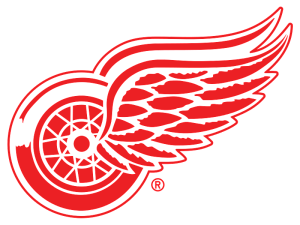 167. LW/C Max Zimmer (Chicago, USHL):
167. LW/C Max Zimmer (Chicago, USHL): Explosive scorer with an extra gear that can inside-out an opponent at the blink of an eye. A late-1997 prospect, the Wisconsin-bound Zimmer has been ringing bells for quite a while now, and he’s maintained his reputation as an elite offensive talent thanks to timely plays like his big goal against Avto in the Junior Club World Cup last summer. He distinguished himself for Team USA at the World Junior “A” Challenge in December to a tune of five goals and three assists in five games, playing on the top-six and named one of the tournament’s top players. There’s a lot to like about a mature kid like Zimmer; an athletic playmaker with good balance who has been dealing with diabetes head-on since he was young. He has decent size (6’0, 187 pounds) and uses his speed and puck control skills to play an inside game. Zimmer has a tricky shot off the rush in that he’ll shoot against the grain and rarely telegraph where he’s placing it. He’ll head to Wisconsin in the fall.
 168. LW Collin Adams (Muskegon, USHL):
168. LW Collin Adams (Muskegon, USHL): Undersized point-producer with speed who teamed with Rem Pitlick to form one of the USHL’s top scoring duos. A native of Brighton, Michigan, Adams led all rookies with 22 power play points and his 61 points overall was second only to Cam Morrison in first-year scoring. A class act both on and off the ice, Adams will head to North Dakota in the fall. He’s tenacious on the forecheck and uses a quick stick to swipe the puck away from unassuming defenders, but also highly effective on zone entries, where he’ll slow the play down with his head up before threading the needle with a lead pass. Adams is tiny (5’9, 172), but he was blessed elite hand-eye coordination and incredibly soft hands that can deaden the toughest of passes. And though we’ll classify him as a finesse forward, he works extremely hard to lend support in his own end, and will bust it on a backcheck every time. .
 169. LW Luke Coleman (Prince Albert, WHL):
169. LW Luke Coleman (Prince Albert, WHL): Speedy, in-your-face power winger (6’1, 193 pounds) who kills penalties and likes to throw the body. If there’s one player in the WHL who deserved every point he registered, and probably a lot more, it’s Coleman, whose momentum-changing hustle proved invaluable to head coach Marc Habscheid. He’s fast and aggressive, but with the skill and touch to compliment his power game. Even more impressive is that he missed 2017 draft eligibility by a week, yet was still one of Prince Albert’s better performers in a first-round series loss to Moose Jaw. Coleman has an excellent shot with a quick release that he can fire with accuracy if with defenders collapsing on top of him.
 170. LW Brett Murray (Carelton Place, CCHL):
170. LW Brett Murray (Carelton Place, CCHL): Big, strong power forward who can pass the puck and make plays in and around traffic. He’s not a great skater, but he’s good enough to occasionally beat his man to the puck or get to an opening in order to receive a pass to fire off an over-average shot. Murray will fight into the dirty areas and muck it up without giving up control of the puck, and can take a continuous beating while ensconced in the low slot. A useful power play option for either the low slot or the wall, Murray is headed to Penn State in the fall. He didn’t necessarily stand out at the WJAC for Canada East, but at 6’5, 200+ pounds, he’s a good option for a team who could work with size and strength on the flanks. He’s almost a late-1998 birthday (7-20-98) with obvious room for growth, but we’d like to see him use his physical advantages to intimidate and out-muscle.
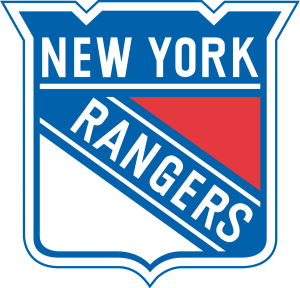 171. LHD Alexander Yakovenko (Russian U18, MHL):
171. LHD Alexander Yakovenko (Russian U18, MHL): Puck-moving bomber with excellent mobility and the ability to run a power play. Yakovenko’s numbers may not jump off the screen, but he was one of Russia’s more reliable backliners and an obvious choice for a team lacking in the possession game. He sports a very hard shot and whips his breakout passes with accuracy, but at times can be a little too aggressive and tries to force the puck through rather than take a second or two and let things transpire. His lateral movement and edge work are solid, and while he isn’t blindingly fast going North to South, he has a long enough stride to catch up and even things out. Yakovenko isn’t physical — it’s not his role nor style — but his slot coverage and stick-use is competent enough to make up for his shortcomings in length and upper body strength. If there are two things that help him stand out among most of his peers, it’s making accurate, decisive passes on the power play, and his ability to prevent pucks from exiting the offensive zone.
 *172. (LAK) C/LW Mitchell Balmas (Charlottetown, QMJHL):
*172. (LAK) C/LW Mitchell Balmas (Charlottetown, QMJHL): : Hard-working puck shark who was one of the more consistent producers on an Islanders squad that struggled to generate offense. Balmas can play either center or wing, but the smarter choice would be to use him on the flank where he can use his above-average speed and tenacity on the forecheck to generate chances. Balmas is pretty thick (6’1, 193 pounds), and he can be tough to move off the puck. He was the seventh overall pick in the 2014 QMJHL Entry Draft, but he’s not the atypical game-breaking prospect you’d expect considering how much buzz he once generated. Balmas has a hard shot with a quick release, but he loves to crash the goal area and fish around for rebound as well. There are times where he may seem like he’s floating, but it’s simply because he’s constantly in motion. Balmas will pressure the points, dump and smash, or drop down below the hash marks to tie up somebody else’s man. We like the fact that he doesn’t fool around once the puck is on his stick, and he’s always looks up ice for openings.
 173. C/LW Michael Graham (Fargo, USHL):
173. C/LW Michael Graham (Fargo, USHL): Minnesota-born power forward with skill who bolted the USHL to star for Eden Prairie High School, only to return to Fargo at season’s end. Graham is a tantalizing prospect because of his combination of skill and size (6’2, 193). He once committed to Minnesota-Duluth, only to change his mind and opt for Notre Dame. The indecisiveness is a bit of a red flag, but he is a teenager, and a talented one at that. He was a finalist for Minnesota’s Mr. Hockey award, and earned a nod in the state championship all-tournament team nomination despite a crushing loss to Wayzata in the finals. Graham can beat you in a variety of ways, as he’s quick and practically unstoppable once he reaches top speed. He knows how to bury the puck thanks to a heavy wrist shot and quick release, but he also uses extreme precision and patience in and around the goal. Graham has posterized quite a few unfortunate souls with his dangles and dekes, but not against mature USHL or NCAA competition. Still, he’s an excellent gamble to take for a late-round prospect.
 *174. (ANA) C Dylan Gambrell (Denver, NCHC):
*174. (ANA) C Dylan Gambrell (Denver, NCHC): Double-overage playmaker whose impressive freshman campaign was overshadowed by 2015 first round picks Kyle Connor (Michigan) and Brock Boeser (North Dakota) — both 2015 first round picks. Gambrell finished third behind the aforementioned duo in first-year scoring with 47 points in 41 games. He was a key cog for the Pioneers’ offense, alternating between center and wing on their top line and playing in all situations, including on the penalty kill. Gambrell is an excellent skater who makes precision plays off the rush and calm, calculated zone entries. He boasts a hard, accurate wrist shot that he won’t hesitate to use, but that doesn’t mean he’s selfish — Gambrell has exceptional vision and selflessly lends puck support rather than float on the periphery for the chance at an open look. His hand-eye coordination is off the charts, as few can match his ability to deaden pucks out of mid-air. Gambrell’s pretty close to being a complete player, although his lack of success in the faceoff circle (43% – 75th among NCAA freshman) needs to be addressed.
 175. LHD Yegor Zaitsev (HK MVD, MHL):
175. LHD Yegor Zaitsev (HK MVD, MHL): There seems to be a dozen Zaitsev’s playing hockey in Russia on the current NHL radar, but we think this kid will turn out to be the best of the group. Yegor is a well-built puck-moving blueliner with solid offensive instincts and the ability to lay bone-crushing hits. He battled the injury bug while shuffling between the MHL and VHL, but a top-six role in Russia’s competitive senior circuit is a discernible goal for 2017. Zaitsev is a rare blend of skill and aggression — he’ll drop down to the hash marks for a shot, then belt an opponent in the chops if the chance doesn’t materialize. In other words, this kid doesn’t get cheated, as he will play the man and finish his check multiples times per shift. Zaitsev may come across as cocky, but it’s somewhat understandable when you can move and hammer the puck the way he can. The kid is listed at 6’0, 180 pounds, but he hunts down and obliterates like a linebacker from the 1970’s. Zaitsev is an opposite point option for the power play and is competent at killing penalties.
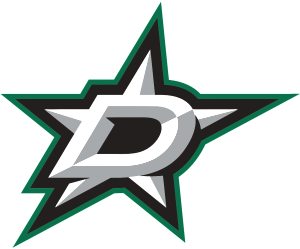 176. C Anthony Salinitri (Sarnia, OHL):
176. C Anthony Salinitri (Sarnia, OHL): Speedy two-way pivot with a ripper of a shot who was buried on Sault Ste Marie’s depth chart in 2015, then slowly blossomed following his trade to Sarnia. Salinitri wasn’t as complete player to earn top-line minutes, but that should change next year when Travis Konecny and Pavel Zacha are no longer around. He has excellent breakaway speed and quickness on the puck, and he possesses a wrist shot hard enough to beat goalies from beyond the high slot. Salinitri likes to get involved in board play and lend support, and he became a tougher out as he grew stronger in both size and confidence, albeit at a deliberate pace with plenty of room for growth. Remember, this kid was a first rounder in the 2014 OHL Priority Selection, so it’s not like he’s some underdog. Salinitri can be used in all situations, to include killing penalties, where he should become one of the league’s top shorthanded threats. Still, he has to improve his on-ice awareness and balance in order to complete his game.
 177. LHD Joe Masonius (UConn, Hockey East):
177. LHD Joe Masonius (UConn, Hockey East): An overage power-play specialist who played for the NTDP in 2015 before heading to Storrs to help the Huskies establish credibility in Hockey East. Masonius is neither big nor physical, but he is extremely agile and loves to jumpstart the offense with a quick pass or a rush up the ice. He doesn’t have blinding speed, but the New Jersey natives is both confident and competent at taking direct routes with the puck into heavy traffic. Masonius is always on the prowl, dropping down well below the dots to either uncork an above-average yet accurate shot, or make a quick cross-ice pass to a wide-open teammate. His hockey sense is pretty high, and it’s no coincidence that UConn scored nearly a third of their total goals on the power play with Masonius at the helm.
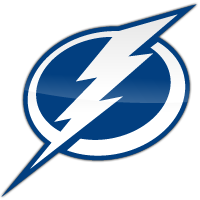 178. LW Nolan Volcan (Seattle, WHL):
178. LW Nolan Volcan (Seattle, WHL): A two-way waterbug with skill who battled through inconsistent play during the regular season to produce a solid effort in the postseason. Volcan was expected to provide scoring depth beyond Mathew Barzal’s top line, but was somewhat slowed by a lower body injury that put him on the shelf for a few weeks. He plays a physical, in-your-face style and every task he’s given is executed with maximum effort. There were times when Volcan was the best player on the ice, especially when he gets going on the forecheck and uses his upper-body strength to wallop defenders off the puck. He’s only 5’9, but the kid isn’t afraid of anything, and consistently fights bigger, older players. He has a good shot and can dangle a bit, but finishing is not one of his strong suits. Volcan may have been a high bantam pick (2nd round in 2013), but he likely finds employment in the bottom six.
 *179 (STL). C Jiri Karafiat (Zlin U21, Extraliga Jrs):
*179 (STL). C Jiri Karafiat (Zlin U21, Extraliga Jrs): Disciplined two-way pivot with good vision and solid playmaking abilities. It wasn’t a banner year for the Czechs in terms of international tournament success, but Karafiat was one of only a handful of their forwards to distinguish himself. He is generally a hard worker who will involve himself in board play, albeit without using much of his 6’2, 170-pound frame to gain control of the puck. He is quite talented for a kid buried on the third or fourth line, which wasn’t the case for Zlin in the Czech junior league. He’s an above-average skater and has good hands from in close, but he needs to bulk up and work on his faceoffs. There’s some real potential here, as Karafiat is a natural center with size who makes his linemates better.
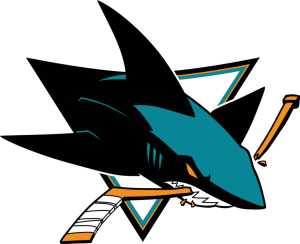 180. LHD Kenny Johnson (Shattuck St. Mary’s, HS-MN):
180. LHD Kenny Johnson (Shattuck St. Mary’s, HS-MN): Towering, rugged defenseman who’ll play for Red Berenson at Michigan just like his older brother (and current Columbus Blue Jacket) Jack Johnson did over a decade earlier. Kenny isn’t quite the offensive threat as Jack was, but he’s already got an NHL build (6’2, 220 pounds) that allows him to focus on developing the nuances of his position. He’s a very good skater with a plus-plus slapshot that enabled him to man the point on Shattuck’s top power play unit. But Kenny is most certainly more advanced in his defensive game — he shut down top line after top line, likely because of his ridiculous wingspan and size advantage. Still, his combination of tenacity and proper positioning makes venturing into the low slot somewhat of a death wish by opposing forwards. He cleaned up his play as well, slicing down his after-the-whistle minors and focusing more on playing a hard-hitting game in between the whistles. Johnson, who injured his shoulder late in the season, will likely play a year in the USHL before playing for the Wolverines in 2018.
 181. LW Kasper Bjorkqvist (Blues U20, Liiga Jrs.):
181. LW Kasper Bjorkqvist (Blues U20, Liiga Jrs.): Finland likely doesn’t win gold at the WJC without an under-appreciated bottom six and penalty kill that the overage Bjorkqvist contributed to mightily. He plays a heavy, inside game thanks to a pro build (6’1, 200) and acute understanding of play development. His eye-popping stats in Finland’s junior circuit (28 goals and 66 points in 45 games) have more to do with his size/strength advantage than anything else, as most of his points come via hard work and taking advantage of an opponent’s weakness. Bjorqvist may seem like a plugger, but he thinks things through shift after shift, and he takes excellent routes to the puck. Both his shot and skating are slightly above average, but he’s shown the ability to shift gears towards the cage and dance around unassuming opponents. He definitely plays a North American style, which will come in handy when he suits up for Providence College next fall.
 *174. (ANA) C Dylan Gambrell (Denver, NCHC): Double-overage playmaker whose impressive freshman campaign was overshadowed by 2015 first round picks Kyle Connor (Michigan) and Brock Boeser (North Dakota) — both 2015 first round picks. Gambrell finished third behind the aforementioned duo in first-year scoring with 47 points in 41 games. He was a key cog for the Pioneers’ offense, alternating between center and wing on their top line and playing in all situations, including on the penalty kill. Gambrell is an excellent skater who makes precision plays off the rush and calm, calculated zone entries. He boasts a hard, accurate wrist shot that he won’t hesitate to use, but that doesn’t mean he’s selfish — Gambrell has exceptional vision and selflessly lends puck support rather than float on the periphery for the chance at an open look. His hand-eye coordination is off the charts, as few can match his ability to deaden pucks out of mid-air. Gambrell’s pretty close to being a complete player, although his lack of success in the faceoff circle (43% – 75th among NCAA freshman) needs to be addressed.
*174. (ANA) C Dylan Gambrell (Denver, NCHC): Double-overage playmaker whose impressive freshman campaign was overshadowed by 2015 first round picks Kyle Connor (Michigan) and Brock Boeser (North Dakota) — both 2015 first round picks. Gambrell finished third behind the aforementioned duo in first-year scoring with 47 points in 41 games. He was a key cog for the Pioneers’ offense, alternating between center and wing on their top line and playing in all situations, including on the penalty kill. Gambrell is an excellent skater who makes precision plays off the rush and calm, calculated zone entries. He boasts a hard, accurate wrist shot that he won’t hesitate to use, but that doesn’t mean he’s selfish — Gambrell has exceptional vision and selflessly lends puck support rather than float on the periphery for the chance at an open look. His hand-eye coordination is off the charts, as few can match his ability to deaden pucks out of mid-air. Gambrell’s pretty close to being a complete player, although his lack of success in the faceoff circle (43% – 75th among NCAA freshman) needs to be addressed. 175. LHD Yegor Zaitsev (HK MVD, MHL): There seems to be a dozen Zaitsev’s playing hockey in Russia on the current NHL radar, but we think this kid will turn out to be the best of the group. Yegor is a well-built puck-moving blueliner with solid offensive instincts and the ability to lay bone-crushing hits. He battled the injury bug while shuffling between the MHL and VHL, but a top-six role in Russia’s competitive senior circuit is a discernible goal for 2017. Zaitsev is a rare blend of skill and aggression — he’ll drop down to the hash marks for a shot, then belt an opponent in the chops if the chance doesn’t materialize. In other words, this kid doesn’t get cheated, as he will play the man and finish his check multiples times per shift. Zaitsev may come across as cocky, but it’s somewhat understandable when you can move and hammer the puck the way he can. The kid is listed at 6’0, 180 pounds, but he hunts down and obliterates like a linebacker from the 1970’s. Zaitsev is an opposite point option for the power play and is competent at killing penalties.
175. LHD Yegor Zaitsev (HK MVD, MHL): There seems to be a dozen Zaitsev’s playing hockey in Russia on the current NHL radar, but we think this kid will turn out to be the best of the group. Yegor is a well-built puck-moving blueliner with solid offensive instincts and the ability to lay bone-crushing hits. He battled the injury bug while shuffling between the MHL and VHL, but a top-six role in Russia’s competitive senior circuit is a discernible goal for 2017. Zaitsev is a rare blend of skill and aggression — he’ll drop down to the hash marks for a shot, then belt an opponent in the chops if the chance doesn’t materialize. In other words, this kid doesn’t get cheated, as he will play the man and finish his check multiples times per shift. Zaitsev may come across as cocky, but it’s somewhat understandable when you can move and hammer the puck the way he can. The kid is listed at 6’0, 180 pounds, but he hunts down and obliterates like a linebacker from the 1970’s. Zaitsev is an opposite point option for the power play and is competent at killing penalties. 178. LW Nolan Volcan (Seattle, WHL): A two-way waterbug with skill who battled through inconsistent play during the regular season to produce a solid effort in the postseason. Volcan was expected to provide scoring depth beyond Mathew Barzal’s top line, but was somewhat slowed by a lower body injury that put him on the shelf for a few weeks. He plays a physical, in-your-face style and every task he’s given is executed with maximum effort. There were times when Volcan was the best player on the ice, especially when he gets going on the forecheck and uses his upper-body strength to wallop defenders off the puck. He’s only 5’9, but the kid isn’t afraid of anything, and consistently fights bigger, older players. He has a good shot and can dangle a bit, but finishing is not one of his strong suits. Volcan may have been a high bantam pick (2nd round in 2013), but he likely finds employment in the bottom six.
178. LW Nolan Volcan (Seattle, WHL): A two-way waterbug with skill who battled through inconsistent play during the regular season to produce a solid effort in the postseason. Volcan was expected to provide scoring depth beyond Mathew Barzal’s top line, but was somewhat slowed by a lower body injury that put him on the shelf for a few weeks. He plays a physical, in-your-face style and every task he’s given is executed with maximum effort. There were times when Volcan was the best player on the ice, especially when he gets going on the forecheck and uses his upper-body strength to wallop defenders off the puck. He’s only 5’9, but the kid isn’t afraid of anything, and consistently fights bigger, older players. He has a good shot and can dangle a bit, but finishing is not one of his strong suits. Volcan may have been a high bantam pick (2nd round in 2013), but he likely finds employment in the bottom six. *179 (STL). C Jiri Karafiat (Zlin U21, Extraliga Jrs): Disciplined two-way pivot with good vision and solid playmaking abilities. It wasn’t a banner year for the Czechs in terms of international tournament success, but Karafiat was one of only a handful of their forwards to distinguish himself. He is generally a hard worker who will involve himself in board play, albeit without using much of his 6’2, 170-pound frame to gain control of the puck. He is quite talented for a kid buried on the third or fourth line, which wasn’t the case for Zlin in the Czech junior league. He’s an above-average skater and has good hands from in close, but he needs to bulk up and work on his faceoffs. There’s some real potential here, as Karafiat is a natural center with size who makes his linemates better.
*179 (STL). C Jiri Karafiat (Zlin U21, Extraliga Jrs): Disciplined two-way pivot with good vision and solid playmaking abilities. It wasn’t a banner year for the Czechs in terms of international tournament success, but Karafiat was one of only a handful of their forwards to distinguish himself. He is generally a hard worker who will involve himself in board play, albeit without using much of his 6’2, 170-pound frame to gain control of the puck. He is quite talented for a kid buried on the third or fourth line, which wasn’t the case for Zlin in the Czech junior league. He’s an above-average skater and has good hands from in close, but he needs to bulk up and work on his faceoffs. There’s some real potential here, as Karafiat is a natural center with size who makes his linemates better. 181. LW Kasper Bjorkqvist (Blues U20, Liiga Jrs.): Finland likely doesn’t win gold at the WJC without an under-appreciated bottom six and penalty kill that the overage Bjorkqvist contributed to mightily. He plays a heavy, inside game thanks to a pro build (6’1, 200) and acute understanding of play development. His eye-popping stats in Finland’s junior circuit (28 goals and 66 points in 45 games) have more to do with his size/strength advantage than anything else, as most of his points come via hard work and taking advantage of an opponent’s weakness. Bjorqvist may seem like a plugger, but he thinks things through shift after shift, and he takes excellent routes to the puck. Both his shot and skating are slightly above average, but he’s shown the ability to shift gears towards the cage and dance around unassuming opponents. He definitely plays a North American style, which will come in handy when he suits up for Providence College next fall.
181. LW Kasper Bjorkqvist (Blues U20, Liiga Jrs.): Finland likely doesn’t win gold at the WJC without an under-appreciated bottom six and penalty kill that the overage Bjorkqvist contributed to mightily. He plays a heavy, inside game thanks to a pro build (6’1, 200) and acute understanding of play development. His eye-popping stats in Finland’s junior circuit (28 goals and 66 points in 45 games) have more to do with his size/strength advantage than anything else, as most of his points come via hard work and taking advantage of an opponent’s weakness. Bjorqvist may seem like a plugger, but he thinks things through shift after shift, and he takes excellent routes to the puck. Both his shot and skating are slightly above average, but he’s shown the ability to shift gears towards the cage and dance around unassuming opponents. He definitely plays a North American style, which will come in handy when he suits up for Providence College next fall.
